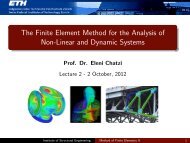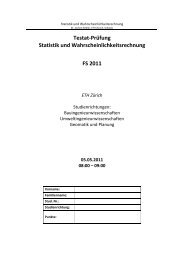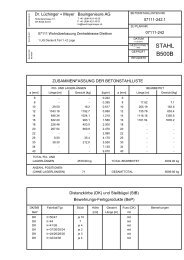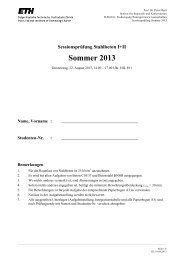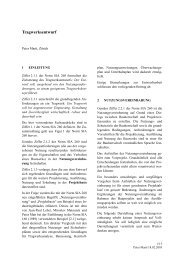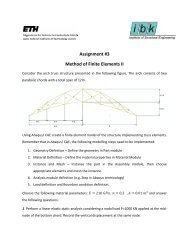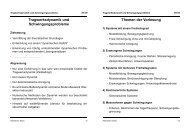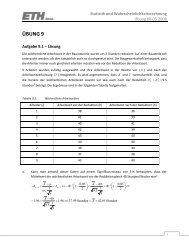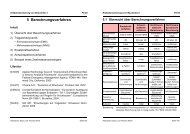A New Program for the Design of Cable-Stayed Bridges Summary 1 ...
A New Program for the Design of Cable-Stayed Bridges Summary 1 ...
A New Program for the Design of Cable-Stayed Bridges Summary 1 ...
Create successful ePaper yourself
Turn your PDF publications into a flip-book with our unique Google optimized e-Paper software.
Fig. 9 Flow diagram <strong>of</strong> <strong>the</strong> assembling <strong>of</strong> a construction<br />
stage<br />
<strong>the</strong> desired construction stage (see<br />
figure 9).<br />
To analyze <strong>the</strong> model <strong>for</strong> a given<br />
load case <strong>the</strong> program BRIDE<br />
proceeds in an analogous way as<br />
<strong>for</strong> <strong>the</strong> assembling <strong>of</strong> <strong>the</strong> finite<br />
element model: it goes through <strong>the</strong><br />
chronological objects list from <strong>the</strong><br />
beginning, takes into account <strong>the</strong><br />
load objects belonging to <strong>the</strong><br />
chosen load case and stops when<br />
<strong>the</strong> stage object corresponding to<br />
<strong>the</strong> stage being analyzed is<br />
encountered.<br />
7. Hereditary iteration: an automatic analysis <strong>of</strong> each construction stage in<br />
chronological order<br />
To take creep and locked-in concrete displacements in a given construction stage into account it is<br />
necessary to know <strong>the</strong> initial displacements a cr and a sh <strong>for</strong> every element (see section 4), which, in<br />
turn, depend on <strong>the</strong> displaced shapes <strong>of</strong> <strong>the</strong> bridge in all previous construction stages. Since it is<br />
important to allow <strong>the</strong> user to view <strong>the</strong> results <strong>of</strong> any construction stage immediately, without<br />
having to wait <strong>for</strong> <strong>the</strong> analysis <strong>of</strong> all <strong>for</strong>mer stages, <strong>the</strong> nodal displacements <strong>of</strong> every construction<br />
stage due to all relevant loads are<br />
stored on <strong>the</strong> corresponding stage data<br />
object.<br />
Such nodal displacements are found<br />
during what is called “hereditary<br />
iteration”, in which every construction<br />
stage is automatically assembled and<br />
analyzed in chronological order.<br />
Figure 10 shows <strong>the</strong> flow diagram <strong>of</strong><br />
such iteration. To denote <strong>the</strong> load<br />
objects which should be taken into<br />
account during <strong>the</strong> hereditary iteration<br />
<strong>the</strong> standard load case called<br />
load_history has been introduced. The<br />
conditional loads are automatically<br />
assigned to this standard load case<br />
because <strong>the</strong>y are to be computed<br />
during <strong>the</strong> hereditary iteration. The<br />
user, however, is still free to assign<br />
Fig. 10 Flow diagram <strong>of</strong> <strong>the</strong> hereditary iteration <strong>the</strong>m to o<strong>the</strong>r load cases or load<br />
combinations.<br />
8. Conclusions<br />
The program BRIDE has been presented which allows to take <strong>the</strong> linear and non-linear behaviour <strong>of</strong><br />
cable-stayed bridges into account in a natural and accurate way during both initial design and<br />
construction. Different original approaches have been implemented in <strong>the</strong> program. The algorithms<br />
specially developed <strong>for</strong> <strong>the</strong> program BRIDE allowing to take such non-linear effects into account<br />
are briefly explained here.



